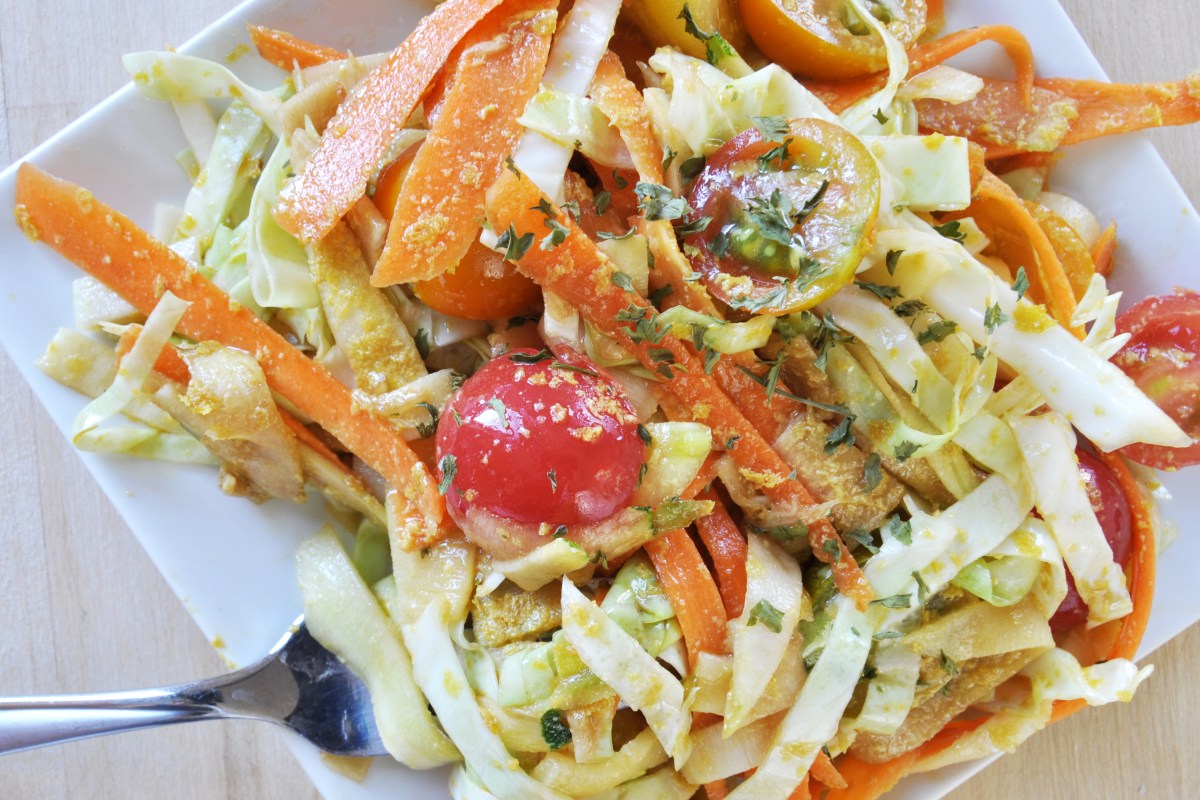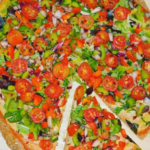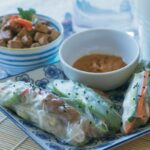Embark on a vibrant culinary journey into the world of raw vegan cuisine! This guide unveils the surprisingly simple art of crafting delicious, healthy meals without compromising flavor or ease. Discover how readily available ingredients transform into vibrant salads, creamy soups, and satisfying snacks, all while nourishing your body with nature’s goodness. Prepare to be amazed by the accessibility and deliciousness of raw vegan eating.
We’ll equip you with fundamental techniques, from mastering the high-speed blender to perfecting the art of dehydration. Learn about essential ingredients, their nutritional powerhouses, and how to incorporate them into your daily diet. Five delectable, step-by-step recipes will guide you, showcasing the versatility and stunning visual appeal of raw vegan creations. Get ready to unlock a world of flavor and well-being.
Introduction to Easy Raw Vegan Recipes
Embark on a vibrant culinary journey into the world of raw vegan cuisine, where vibrant colors, fresh flavors, and effortless preparation converge. Raw veganism, far from being restrictive, offers a surprisingly accessible and rewarding path to healthier eating. Imagine meals bursting with the natural sweetness of fruits, the satisfying crunch of vegetables, and the creamy richness of nuts and seeds, all prepared with minimal effort and maximum flavor. This guide will illuminate the simplicity and transformative benefits of this exciting culinary approach.
This guide unveils the secrets to creating delicious and nutritious raw vegan meals without the fuss. We’ll explore simple techniques and recipes that even the busiest individuals can easily incorporate into their daily lives. Discover how to transform everyday ingredients into extraordinary dishes that nourish your body and tantalize your taste buds.
Reasons to Embrace Raw Vegan Recipes
Three compelling reasons propel individuals towards the vibrant world of raw vegan cuisine. Firstly, the abundance of vitamins, minerals, and enzymes found in raw plant-based foods provides a significant boost to overall health and well-being. These nutrients, often lost through cooking, remain intact in raw vegan dishes, offering a powerful nutritional punch. Secondly, the simplicity and speed of preparation allow for effortless meal creation, perfect for busy lifestyles. Many raw vegan recipes require minimal cooking time and simple techniques, making them ideal for quick lunches, dinners, or snacks. Thirdly, the inherent lightness and freshness of raw vegan meals contribute to improved digestion and increased energy levels, promoting a sense of vitality and well-being throughout the day.
Essential Equipment for Raw Vegan Cooking
Preparing delightful raw vegan meals requires surprisingly little specialized equipment. A high-quality blender is arguably the most essential tool, capable of creating creamy soups, vibrant sauces, and decadent desserts. Visualize the powerful motor effortlessly pulverizing fruits, vegetables, and nuts into smooth, velvety textures. A food processor is equally valuable, allowing for quick chopping, slicing, and the creation of various nut butters and other spreads. Imagine the satisfying whirring sound as it transforms nuts into a creamy, rich paste. Finally, a good quality knife set, a cutting board, and several mixing bowls complete the essential arsenal for crafting vibrant and healthy raw vegan meals. These simple tools unlock a world of culinary possibilities, allowing you to create a vast array of flavorful and nutritious dishes.
Fundamental Raw Vegan Techniques
Mastering a few key techniques unlocks a world of vibrant, delicious raw vegan possibilities. These foundational skills will empower you to confidently create a wide array of dishes, from creamy cashew cheese to perfectly dehydrated fruit leathers. This section details the essential methods for preparing raw ingredients and achieving optimal textures and flavors.
Chopping, Blending, and Dehydrating
Proper preparation is paramount in raw vegan cooking. Chopping vegetables and fruits into consistent sizes ensures even cooking (or in this case, dehydrating) and a pleasing aesthetic. Blending is crucial for creating smooth, creamy textures in sauces, soups, and desserts. Dehydrating removes moisture, concentrating flavors and creating unique textures.
High-Speed Blender Techniques for Creamy Sauces and Soups
The high-speed blender is your secret weapon for achieving velvety smooth textures. For creamy sauces, start by soaking nuts or seeds (like cashews or sunflower seeds) for at least 4 hours, or preferably overnight, to soften them. This significantly improves their blendability and creates a richer, creamier consistency. Add your soaked nuts or seeds to the blender along with your chosen liquid (water, plant-based milk, or broth), and blend on high speed until completely smooth and creamy. For soups, incorporate already-chopped vegetables and liquid, blending until the desired consistency is reached. Adding a little bit of oil can also improve the creaminess and texture of the final product. A common example is a creamy tomato soup, where blending roasted tomatoes with a little olive oil creates a remarkably smooth and flavorful soup.
Dehydrating Vegetables and Fruits: A Step-by-Step Guide
Dehydrating allows you to preserve the nutrients and flavors of fruits and vegetables while creating unique textures. Begin by thoroughly washing and preparing your chosen fruits or vegetables. Slice them thinly and evenly for consistent drying. Arrange the slices in a single layer on your dehydrator trays, ensuring they don’t overlap to allow for proper airflow. The optimal temperature for dehydrating varies depending on the food and machine, but generally ranges between 105-115°F (40-46°C). Dehydration time also varies greatly depending on the thickness of the slices and the type of food. Thinner slices will dry faster, and fruits typically dehydrate faster than denser vegetables. For example, thin apple slices might take 6-8 hours, while thicker carrot slices could take 12-18 hours. Regularly check your food and rotate trays for even drying. The fruits and vegetables are ready when they are leathery and pliable, but not brittle. Properly dehydrated fruits and vegetables should retain their vibrant colors and flavors, adding a unique dimension to your raw vegan creations.
Tips and Tricks for Raw Vegan Success

Embarking on a raw vegan journey can be incredibly rewarding, but it’s also a learning process. Understanding common pitfalls and implementing a few key strategies can significantly enhance your experience, leading to delicious and satisfying meals every time. This section will equip you with the knowledge to navigate the nuances of raw vegan cooking and achieve consistent success.
Common Beginner Mistakes and Their Solutions
Many beginners encounter challenges in their initial foray into raw vegan cuisine. Understanding these common hurdles and their solutions is crucial for a smooth transition. For instance, improper food preparation can lead to undesirable textures or compromised nutritional value. Similarly, overlooking the importance of flavor balancing can result in dishes that lack depth and appeal.
- Mistake: Over-processing ingredients. Over-blending can lead to a pasty texture in smoothies and sauces. Excessive food processing can also diminish the nutritional value of ingredients by destroying delicate enzymes.
- Solution: Use a high-quality blender, but blend only until smooth. For some recipes, a little texture is desirable and adds interest. Consider using a food processor for chopping or grating rather than over-blending.
- Mistake: Ignoring proper food safety. Raw vegan food, like all food, requires attention to hygiene to avoid bacterial contamination. This is particularly important with ingredients like sprouts.
- Solution: Thoroughly wash all produce before use. Store raw vegan dishes properly, keeping them refrigerated and consuming them within a reasonable timeframe. Avoid cross-contamination between raw and cooked foods.
- Mistake: Lack of variety in ingredients. Relying on the same few ingredients can lead to nutritional deficiencies and culinary boredom.
- Solution: Explore a wide range of fruits, vegetables, nuts, seeds, and sprouts. Experiment with different flavor combinations to discover new favorites. Consider incorporating superfoods like spirulina or chlorella for additional nutritional benefits.
Optimizing Flavor and Texture
Mastering the art of raw vegan cooking involves more than just blending ingredients together; it’s about creating a harmonious balance of flavors and textures that tantalize the palate. Certain techniques can elevate your dishes from simply edible to truly extraordinary.
- Flavor Enhancement: Incorporating a variety of spices, herbs, and flavorful ingredients, such as nutritional yeast, miso paste, or tamari, adds depth and complexity to your dishes. Experiment with different flavor profiles to discover your preferences.
- Texture Variation: Combining different textures, such as crunchy nuts and seeds with creamy avocados or soft fruits, creates a more interesting and satisfying eating experience. Think about the contrast between textures when designing your recipes.
- Acid-Base Balance: The interplay between acidic and alkaline ingredients is key to achieving a well-balanced flavor profile. A squeeze of lemon juice or a dash of apple cider vinegar can brighten up a dish, while adding ingredients like avocados or bananas can provide a creamy counterpoint.
Resources for Raw Vegan Inspiration
The world of raw vegan cuisine is vast and continuously evolving. Numerous resources are available to inspire your culinary journey and expand your repertoire.
- Cookbooks and Blogs: Countless cookbooks and blogs are dedicated to raw vegan recipes, offering a wealth of inspiration and guidance. Look for authors and bloggers with a proven track record and a focus on healthy, delicious recipes.
- Online Communities: Join online forums and communities dedicated to raw veganism. These platforms provide opportunities to connect with other enthusiasts, share recipes, and ask questions.
- Raw Vegan Restaurants and Classes: If possible, visit raw vegan restaurants to sample diverse dishes and observe professional techniques. Consider taking a raw vegan cooking class to learn advanced techniques and expand your skills.
Unlocking the secrets of effortless raw vegan cooking is easier than you think! This guide has provided you with the foundational knowledge and practical recipes to confidently navigate this vibrant culinary landscape. From understanding essential techniques to mastering flavorful ingredient combinations, you now possess the tools to create a diverse range of healthy and delicious meals. Embrace the journey, experiment with flavors, and savor the rewarding experience of nourishing your body with the vibrant energy of raw vegan cuisine. Bon appétit!
Questions Often Asked
Can I use frozen fruits and vegetables in raw vegan recipes?
While fresh ingredients are ideal, you can sometimes use frozen fruits and vegetables, especially in smoothies or blended dishes. Just be aware that the texture might be slightly different.
How long do raw vegan dishes last in the refrigerator?
This depends on the recipe, but generally, most raw vegan dishes should be consumed within 3-5 days for optimal freshness and safety. Proper storage in airtight containers is crucial.
Are raw vegan recipes expensive?
The cost can vary depending on your location and choices, but many raw vegan recipes utilize inexpensive ingredients like seasonal fruits and vegetables. Careful planning and buying in bulk can help keep costs down.
What if I don’t have a dehydrator?
While a dehydrator is helpful for certain recipes, many raw vegan dishes don’t require one. You can often achieve similar results by using a low oven temperature or sun-drying (weather permitting).


